20 High-Volatility Stocks for the Market's Next Swing
Active or tactical investors and traders might want to lean into the market's volatility via high-quality, high-vol stocks.


If there's been one constant through the first few months of 2022, it's that volatility has come back with a vengeance. And yet as counterintuitive as it might sound, investors should think twice before dumping high-volatility stocks from their portfolios.
That's because all those high-vol stocks doing outsized damage to your returns in a down market are likely to be your biggest outperformers in an up market.
Indeed, if equities' mid-March pivot really does mark a new trend – one in which the major indexes manage to keep grinding higher – many of your worst market laggards should become your best market-beating leaders.

Sign up for Kiplinger’s Free E-Newsletters
Profit and prosper with the best of expert advice on investing, taxes, retirement, personal finance and more - straight to your e-mail.
Profit and prosper with the best of expert advice - straight to your e-mail.
Volatility Cuts Both Ways
Embracing high-volatility stocks is easier said than done. Gyrating asset prices are generally contraindicated for getting a decent night's sleep. (If anything, investors are often told to gobble up low-volatility stocks to maintain their sanity). Volatility is also a proxy for risk. It increases the odds of buying high and selling low.
But strategists say roller-coaster price action isn't going away anytime soon, which means investors must learn to live with it, at least for now.
Heightened volatility "is the name of the game," says David Rosenberg, chief economist and strategist at Rosenberg Research. And his peers, both bearish and bullish, pretty much agree.
For one thing, even if the uncertainty unleashed by the war in Ukraine were miraculously resolved overnight, the Federal Reserve's increasingly hawkish stance on inflation should continue to create waves.
"If markets survive Putin, they'll still have to deal with [Fed Chair Jerome] Powell," writes Richard Saperstein, chief investment officer at Treasury Partners, a New York City wealth manager with $9 billion in assets under management. "Even prior to Russia's invasion of Ukraine, there were growing risks to the investment backdrop that had already precipitated increased market volatility."
That said, volatility isn't the same thing as returns. Returns are what you get; volatility is how you get there.
One pernicious aspect of heightened volatility is that it feeds into investors' unfortunate tendency to focus on short-term market noise at the expense of longer-term signals.
Perhaps that's why 2022 thus far feels like a disaster, even if the tape shows it really has been nothing of the sort:
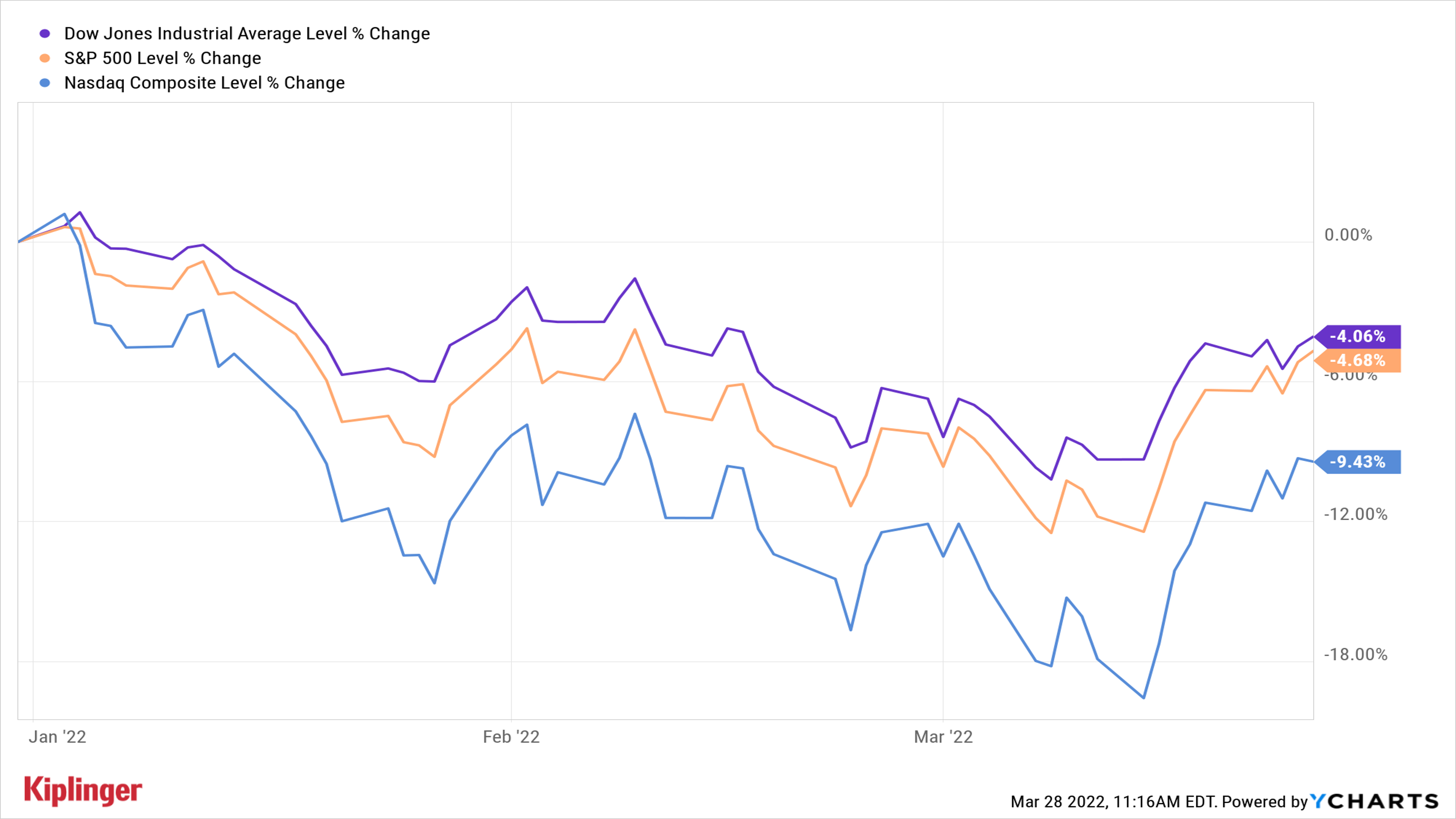
Through March 25, the Nasdaq Composite was off 9.4% for the year-to-date (and just barely in correction territory, or down 10.5%, from its Jan. 3 high). The S&P 500 and Dow Jones Industrial Average were down 4.7% and 4.7%, respectively.
To be sure, that's a bad start to any year. None of it has been fun. But we're hardly talking about a wipeout in equities here.
More importantly, markets have reversed trend since March 14 – the day the Fed announced the first of what is expected to be a series of interest rate hikes. Have a look at how the major indexes have performed since Powell pulled the Fed's trigger:
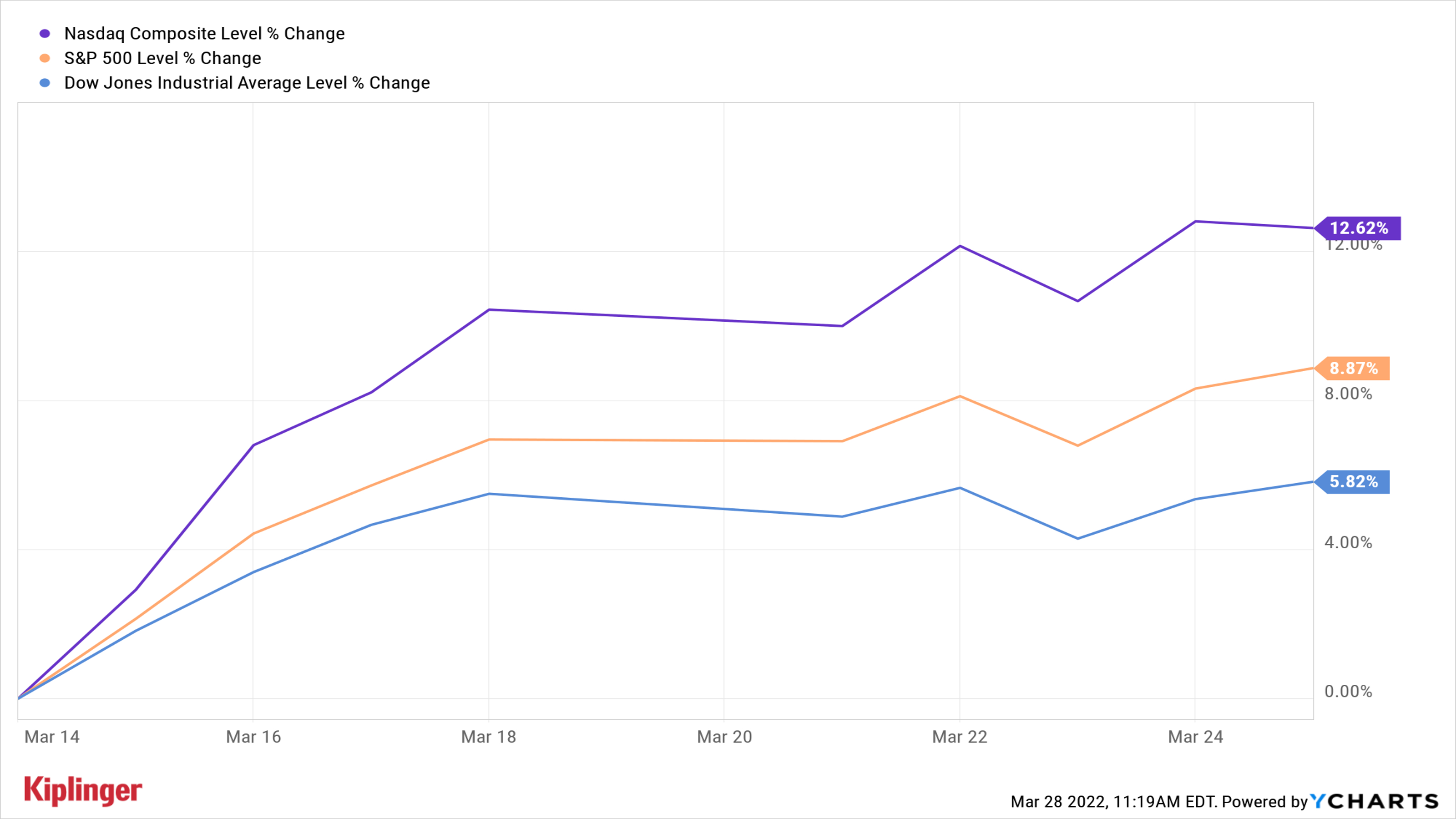
"The volatility that we've seen in markets since the start of the year has continued," says Michael Reinking, senior market strategist for the New York Stock Exchange. "It just cuts in the opposite direction."
High-Volatility Stocks for the Market's Next Swing
Past performance, as we all know ad nauseam, is not indicative of future returns. But if past is anything similar to prologue, investors should actually want more exposure to high-volatility stocks in an otherwise diversified portfolio.
Buy-and-hold investors probably shouldn't try this at home, but active or tactical investors and traders might want to try adding some quality, high-volatility stocks to their holdings.
To find the best stocks for the situation, we screened the S&P 500 for stocks with the highest betas. To oversimplify a bit, beta measures how a stock moves relative to the S&P 500. It's a volatility metric, and something of a proxy for risk.
The S&P 500 has a beta of 1.0. Any stock that trades with a beta greater than 1.0 can be said to be more volatile than the broader market. In practice, that means it tends to outperform the benchmark index when stocks are rising, and underperform it when stocks are going down. A stock with a beta of, say, 2.0 can kind of be thought of as twice as volatile as the S&P 500.
Be aware that beta is backward looking. It measures how a stock has traded relative to the S&P 500 in the past, commonly over a one-, two- or five-year period.
For that reason, we screened the S&P 500 for stocks with the highest one-year betas, or most volatile names of the recent past. We then narrowed down our list to high-volatility stocks with the strongest Buy recommendations from industry analysts.
Here's how that process works. S&P Global Market Intelligence surveys analysts' stock calls and scores them on a five-point scale, where 1.0 equals a Strong Buy and 5.0 is a Strong Sell. Any score equal to or below 2.5 means that analysts, on average, rate the stock at Buy. The closer a score gets to 1.0, the stronger the consensus Buy recommendation.
Have a look at the table below of the 20 S&P 500 stocks with the highest betas and strongest conviction Buy recommendations from Wall Street analysts. Among the highlights:
- Nvidia (NVDA, $276.92), with a beta of 2.4, has been far more volatile than the broader market over the past 52 weeks. Little wonder there: The semiconductor stock is emblematic of the way investors ditched last year's pricey growth darlings in favor of value names in 2022. NVDA outperformed the S&P 500 by a wide margin last year, but then seriously lagged the index for much of 2022. At its nadir, NVDA was off nearly 28% for the year-to-date as of March 14. It has since come roaring back to close its gap with the S&P 500, and now trails by only about a single percentage point. Analysts give the stock a consensus recommendation of Buy, with high conviction.
- Etsy (ETSY, $132.32) has traded as high as $307.75 over the past 52 weeks and as low as $109.38. Shares are down by more than a third for the year-to-date, but analysts say they're set to reverse trend and deliver market-beating returns. The global e-commerce platform for jewelry, apparel, home décor and other crafts supplies get a consensus recommendation of Buy, with high conviction. "As the leader in the niche market of artisanal goods, we believe Etsy has carved out a favorable competitive position with formidable barriers," writes Stifel analyst Scott W. Devitt (Buy). "The company is exiting a transition period where operations were streamlined, resources refocused and a number of initiatives implemented to reinvigorate growth."
- KLA Corp. (KLAC, $366.44), like any company connected with the semiconductor industry, has been whipsawed around by the global chip shortage, supply chain snafus and geopolitical uncertainty. But KLAC continues to build on its industry-leading market share in process control and metrology, says Argus Research analyst Jim Kelleher (Buy). "With demand strengthening and now exceeding pre-pandemic production levels in many markets, KLAC shares appear attractive at current levels," the analyst writes. The Street largely concurs, giving KLAC a consensus recommendation of Buy, with strong conviction. Indeed, analysts forecast the company to generate average annual earnings per share growth of 16% over the next three to five years. KLAC might offer investors a bumpy ride, but the potential for outperformance can't be denied, bulls say.
Here's the full list of high-volatility stocks:
| Company Name | Ticker | One-Year Beta | Average Broker Recommendation |
|---|---|---|---|
| Nvidia | NVDA | 2.43 | 1.62 |
| Etsy | ETSY | 2.36 | 1.63 |
| Align Technology | ALGN | 2.18 | 1.73 |
| KLA Corp. | KLAC | 2.06 | 1.79 |
| Teradyne | TER | 1.95 | 1.70 |
| DexCom | DXCM | 1.89 | 1.40 |
| Bath & Body Works | BBWI | 1.76 | 1.48 |
| ServiceNow | NOW | 1.75 | 1.40 |
| Adobe | ADBE | 1.72 | 1.63 |
| Caesars Entertainment | CZR | 1.66 | 1.29 |
| PayPal Holdings | PYPL | 1.65 | 1.75 |
| Monolithic Power Systems | MPWR | 1.58 | 1.31 |
| Bio-Techne | TECH | 1.57 | 1.64 |
| Meta Platforms | FB | 1.56 | 1.66 |
| Micron Technology | MU | 1.56 | 1.51 |
| D.R. Horton | DHI | 1.56 | 1.67 |
| Synopsys | SNPS | 1.52 | 1.57 |
| Intuit | INTU | 1.49 | 1.57 |
| Salesforce.com | CRM | 1.47 | 1.50 |
Get Kiplinger Today newsletter — free
Profit and prosper with the best of Kiplinger's advice on investing, taxes, retirement, personal finance and much more. Delivered daily. Enter your email in the box and click Sign Me Up.

Dan Burrows is Kiplinger's senior investing writer, having joined the august publication full time in 2016.
A long-time financial journalist, Dan is a veteran of MarketWatch, CBS MoneyWatch, SmartMoney, InvestorPlace, DailyFinance and other tier 1 national publications. He has written for The Wall Street Journal, Bloomberg and Consumer Reports and his stories have appeared in the New York Daily News, the San Jose Mercury News and Investor's Business Daily, among many other outlets. As a senior writer at AOL's DailyFinance, Dan reported market news from the floor of the New York Stock Exchange.
Once upon a time – before his days as a financial reporter and assistant financial editor at legendary fashion trade paper Women's Wear Daily – Dan worked for Spy magazine, scribbled away at Time Inc. and contributed to Maxim magazine back when lad mags were a thing. He's also written for Esquire magazine's Dubious Achievements Awards.
In his current role at Kiplinger, Dan writes about markets and macroeconomics.
Dan holds a bachelor's degree from Oberlin College and a master's degree from Columbia University.
Disclosure: Dan does not trade individual stocks or securities. He is eternally long the U.S equity market, primarily through tax-advantaged accounts.
-
 6 Stunning Waterfront Homes for Sale Around the US
6 Stunning Waterfront Homes for Sale Around the USFrom private peninsulas to lakes, bayous and beyond, Kiplinger's "Listed" series brings you another selection of dream homes for sale on the waterfront.
By Charlotte Gorbold Published
-
 Six Reasons to Disinherit Someone and How to Do It
Six Reasons to Disinherit Someone and How to Do ItWhether you're navigating a second marriage, dealing with an estranged relative or leaving your assets to charity, there are reasons to disinherit someone. Here's how.
By Donna LeValley Published
-
 Stock Market Today: Dow Drops Another 2,231 Points to Hit a Correction
Stock Market Today: Dow Drops Another 2,231 Points to Hit a CorrectionThe Nasdaq Composite, meanwhile, entered a new bear market with its latest slide.
By Karee Venema Published
-
 Stock Market Today: Dow Dives 1,679 Points on Trump Tariff Shock
Stock Market Today: Dow Dives 1,679 Points on Trump Tariff ShockU.S. stocks lost roughly $3.1 trillion in market cap on Thursday – the biggest one-day decline since the start of the COVID-19 pandemic in March 2020.
By Karee Venema Published
-
 The Stock Market Is Selling Off. Here's What Investors Should Do
The Stock Market Is Selling Off. Here's What Investors Should DoInvestors started fleeing the equities market en masse in response to the Trump administration's "jaw-dropping" tariffs. But the experts say don't panic.
By Karee Venema Last updated
-
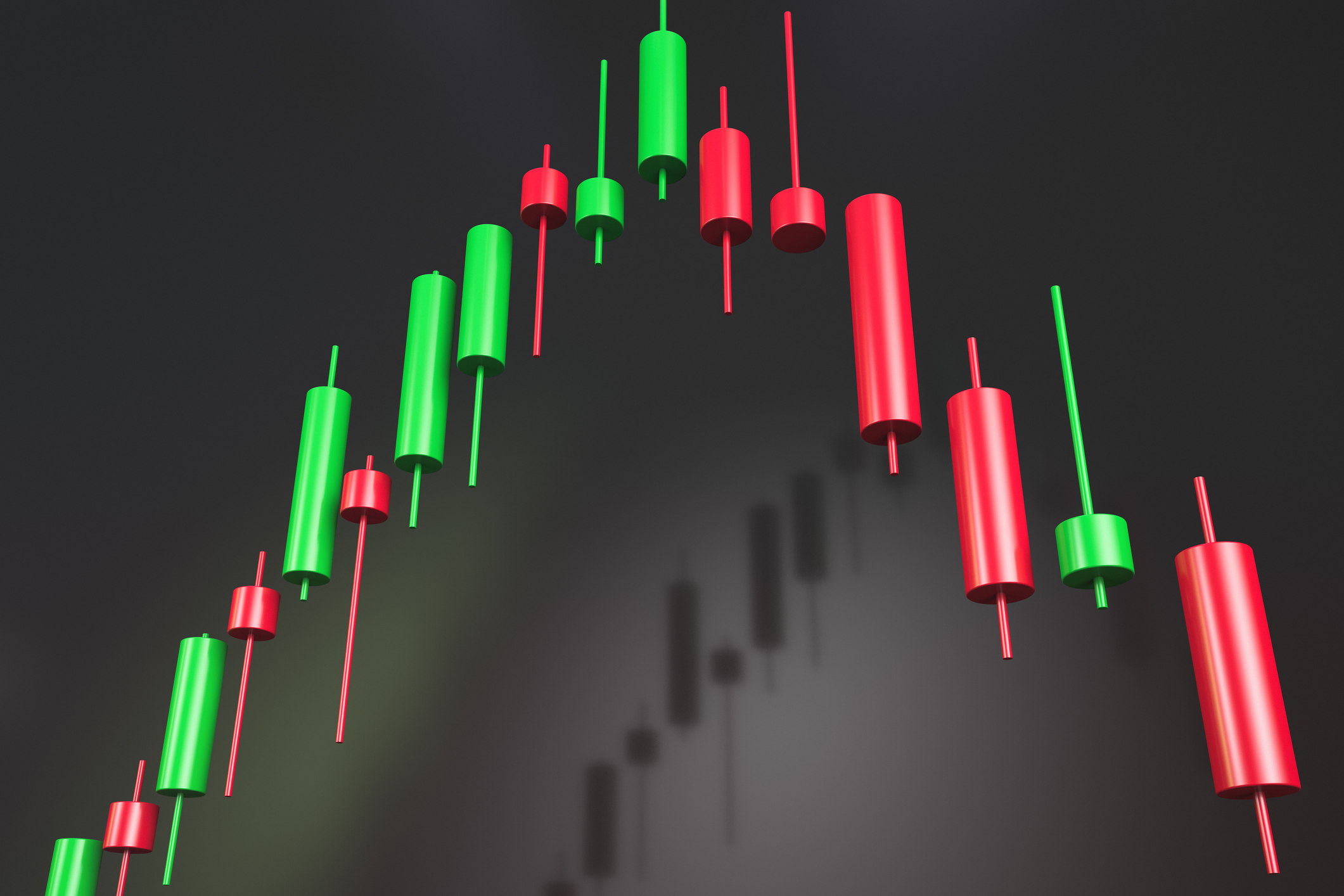 Stock Market Today: It's the Old Up-Down Again on Liberation Day
Stock Market Today: It's the Old Up-Down Again on Liberation DayMarkets look forward to what comes with the reordering of 80-year-old global trade relationships.
By David Dittman Published
-
 Stock Market Today: Dow Rises 854 Points From Its Intraday Low
Stock Market Today: Dow Rises 854 Points From Its Intraday LowIf there's one thing markets hate, it's uncertainty. But uncertainty is all they're getting these days.
By David Dittman Published
-
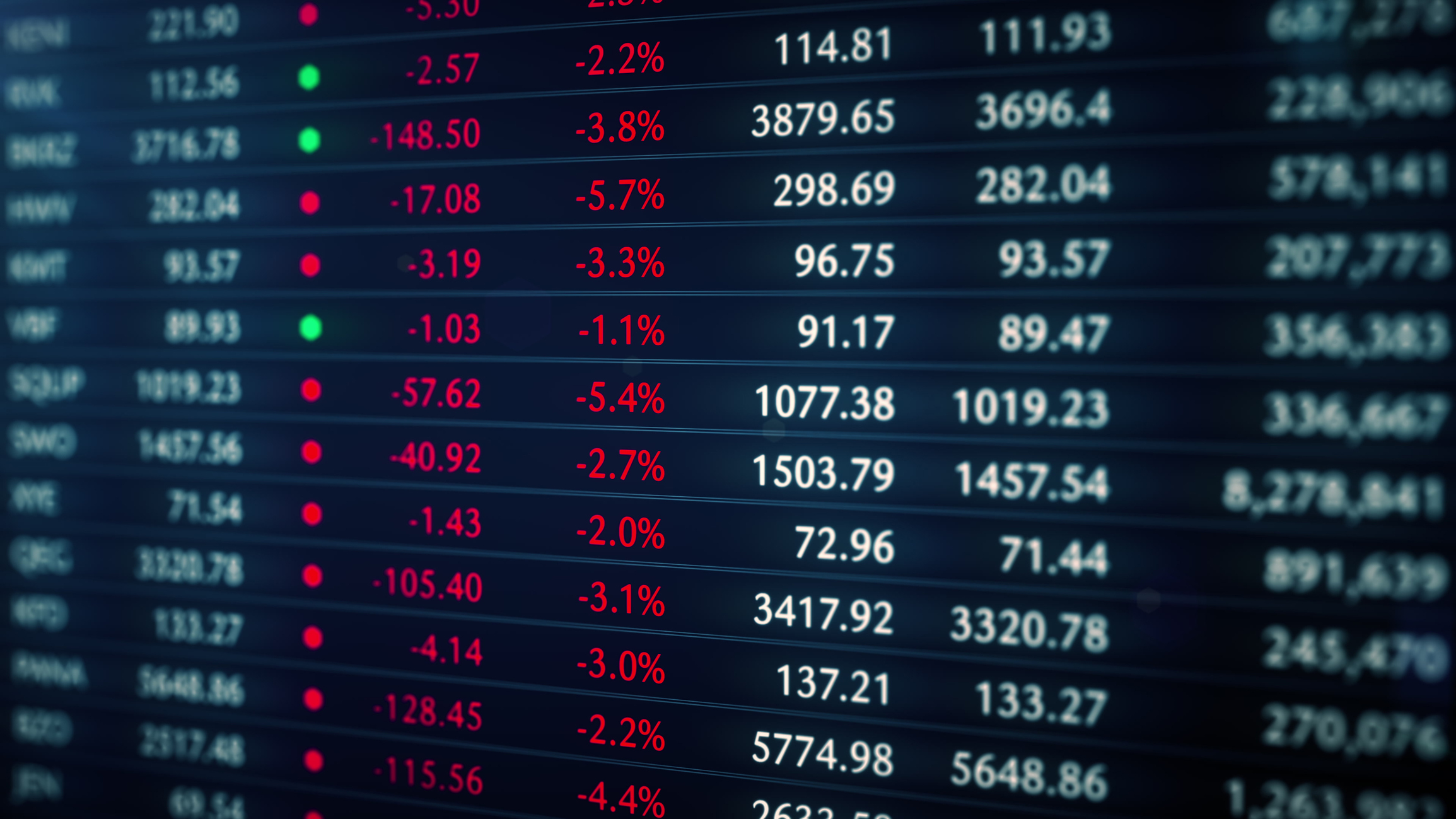 Stock Market Today: Auto Tariffs Send Stocks Lower
Stock Market Today: Auto Tariffs Send Stocks LowerThe main indexes snapped their win streaks after the White House confirmed President Trump will talk about auto tariffs after the close.
By Karee Venema Published
-
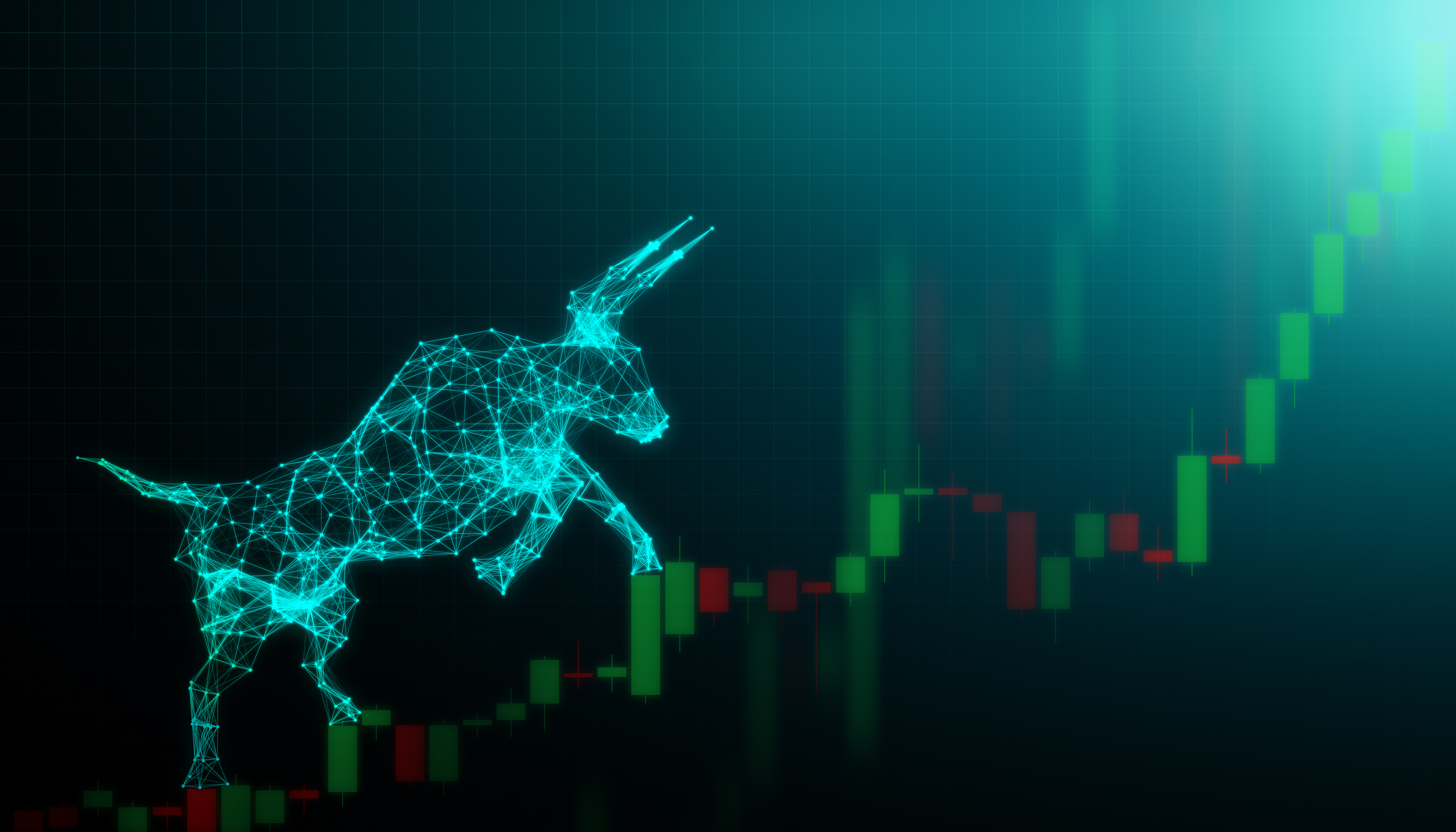 Stock Market Today: Markets Celebrate Trump's Tariff Détente
Stock Market Today: Markets Celebrate Trump's Tariff DétenteConsumer discretionary stocks led 10 of the 11 S&P 500 sector groups well into the green.
By David Dittman Published
-
 Stock Market Today: Stocks Swing Higher After Early Slump
Stock Market Today: Stocks Swing Higher After Early SlumpNegative earnings reactions for Nike, FedEx and Micron kept pressure on the main indexes, though.
By Karee Venema Published